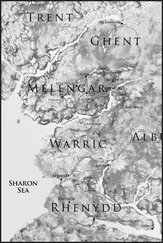Michael Neufeld - The Rocket and the Reich
Здесь есть возможность читать онлайн «Michael Neufeld - The Rocket and the Reich» весь текст электронной книги совершенно бесплатно (целиком полную версию без сокращений). В некоторых случаях можно слушать аудио, скачать через торрент в формате fb2 и присутствует краткое содержание. Город: Washington, Год выпуска: 2013, ISBN: 2013, Издательство: Smithsonian Books, Жанр: История, military_weapon, на английском языке. Описание произведения, (предисловие) а так же отзывы посетителей доступны на портале библиотеки ЛибКат.
- Название:The Rocket and the Reich
- Автор:
- Издательство:Smithsonian Books
- Жанр:
- Год:2013
- Город:Washington
- ISBN:978-1-58834-466-3
- Рейтинг книги:3 / 5. Голосов: 1
-
Избранное:Добавить в избранное
- Отзывы:
-
Ваша оценка:
- 60
- 1
- 2
- 3
- 4
- 5
The Rocket and the Reich: краткое содержание, описание и аннотация
Предлагаем к чтению аннотацию, описание, краткое содержание или предисловие (зависит от того, что написал сам автор книги «The Rocket and the Reich»). Если вы не нашли необходимую информацию о книге — напишите в комментариях, мы постараемся отыскать её.
The Rocket and the Reich — читать онлайн бесплатно полную книгу (весь текст) целиком
Ниже представлен текст книги, разбитый по страницам. Система сохранения места последней прочитанной страницы, позволяет с удобством читать онлайн бесплатно книгу «The Rocket and the Reich», без необходимости каждый раз заново искать на чём Вы остановились. Поставьте закладку, и сможете в любой момент перейти на страницу, на которой закончили чтение.
Интервал:
Закладка:
Von Braun went on to raise a second reason why the rocket group was reluctant to become involved with private corporations:
Because the previous development of liquid-fuel rocket propulsion has been financed by the state, Section 1 continues to place decisive importance on an agreement that drawings and design documentation of all sorts grounded in that experience not be made available to industry. Otherwise there is the danger that profit-making opportunities in industry would arise from development the state has carried out at a considerable expense. 11
Not only military secrecy was at issue; working with an aircraft firm raised the specter of the commercial exploitation of rocket technology, for example, through the construction of takeoff-assist rockets for heavily loaded airplanes, one of the goals of Winkler’s work at Junkers. But that would contradict the direction in which the Ordnance group was going: toward a large, secretive military laboratory in which corporations were only subcontractors.
Von Braun’s misgivings about a corporate role in the rocket program not only reflected the attitudes of his superiors; it also accorded with the rather empty anticapitalist rhetoric of National Socialism. But von Braun did not join the Party until asked to do so in 1937, and although he and the officers in the program showed every sign of enthusiastically embracing Hitler’s rearmament and “national regeneration,” none shows any sign of having been a Nazi ideologue. Ordnance’s construction of an empire of Army-owned munitions factories during the Third Reich drew less on National Socialist ideology than on centuries-old traditions of state ownership in Prussia and Germany. Ultimately, however, the obsession with secrecy and surprise and the distrust of the independent groups and inventors were the crucial factors in the rocket group’s desire to restrict corporate access to the technology. Secrecy and von Braun’s success at Kummersdorf had launched the Army firmly down the path of in-house development. 12
As von Richthofen pointed out at the June 27 meeting, Ordnance’s restrictive conditions would effectively obstruct cooperation with an aircraft firm like Junkers. Nor would the Luftwaffe accept junior-partner status in any joint “experimental rocket establishment.” That statement did not, however, undermine the friendly tone of the meeting. Von Richthofen then sketched his rocket interceptor concept: an aircraft that could, after a forty-five-second boost, coast up to 15,000 meters (50,000 feet) and then glide or cruise at high altitude for some minutes. As a preliminary step, a small experimental rocket plane could be tested, perhaps by towing it into the air and igniting the engine. The projected contractor was Junkers, he announced; von Richthofen had earlier cleared this arrangement with the company representative, Professor Mader. 13
During the summer of 1935 the Air Ministry brought a second large firm into the program, Ernst Heinkel Aircraft. Its owner and namesake was fascinated by high-speed flight. The Ministry may also have wished to mollify him after his company lost the single-engine fighter competition of that year. In September Ordnance, the Technical Office, Junkers, and Heinkel signed a joint agreement protecting the secrecy of Ordnance rocket development. Only five or six people at each firm were to receive access to the plans and documents, and they were to work on rocket aircraft in closed shops. Winkler’s name was conspicuously absent from the list of Junkers employees inside the charmed circle. Sometime after late October the Kummersdorf group received a Junkers “Junior” single-engine light plane and experimented with the installation of a 300-kg-thrust A-2-type rocket in the tail. The funding and arrangements for the tests were made through the Research Division of the Technical Office in collaboration with the quasi-governmental German Experimental Establishment for Aviation in Berlin. The experiments aimed at developing takeoff-assist rockets for overloaded bombers as well as gaining experience in rocket-plane work. For unknown reasons the Junkers firm itself dropped out of the picture in the fall of 1935. 14
Ernst Heinkel’s firm thus became the sole aircraft contractor. On October 16, 1935, at Heinkel’s plant near Rostock on the Baltic coast, Wernher von Braun, Walter Riedel, and two Air Ministry engineers met company managers, including the short, bald, bespectacled owner himself. They discussed how Ordnance’s rocket technology might be accommodated in an aircraft. 15The eventual decision was to proceed with an interim project before the construction of a pure rocket aircraft. A rocket engine would be installed in the tail of a Heinkel He 112 single-engine fighter, the loser to the soon-to-be-famous Messerschmitt Bf 109 in the 1935 competition. In December the firm specified an engine thrust of 1,000 kg, which became the Kummersdorf “4B” series of motors. (The variants of the 1,500-kg engine for the ongoing A-3 project formed the “3B” series.) During the same month von Braun requested 200,000 marks from the Air Ministry for “Project 112 R,” noting that speed was of the essence since the work had already begun. 16
By the end of 1935, then, both the Junkers Junior and the He 112 projects had been launched as part of the new Army-Luftwaffe alliance in rocketry. But the most important product of this alliance was yet to come. Shortly after New Year’s Day 1936, von Braun’s concept of an “experimental rocket establishment” would bear fruit.
PEENEMÜNDE AND THE A-4
A new test facility had been in the minds of the rocket group for some time before von Braun’s June 1935 memorandum. According to Dornberger, “our area at Kummersdorf had long since become too small for us. Even at the firing of our powder rockets we were never quite at ease” because of the possibility that the devices might go astray. Liquid-fuel rockets were likely to be even more unreliable. For that reason the A-2s had been launched from Borkum, but that involved an elaborate and inconvenient expedition. Secrecy was another consideration; engine testing was very noisy. Finally, developing a large ballistic missile obviously required much more extensive facilities, something that became feasible with the free-spending Luftwaffe on the scene. 17
Dornberger, who returned to head rocket development on March 1, 1936, recalls that von Braun had been searching for an appropriate firing range along the Baltic coast since mid-December 1935. The young engineer found an excellent location on the island of Rügen, but the German Labor Front, the mandatory Nazi union for all workers and employers, had claimed it as a beach resort. It was thus quite by chance that von Braun found the perfect site:
Christmas 1935 I went home to my father’s farm in Silesia. I told my parents about the new prospects, adding that we were on the lookout for a suitable site from which it was possible to fire rockets over several hundred miles; safety reasons required this site to be situated on the coast.
“Why don’t you take a look at Peenemünde” my mother suggested. “Your grandfather used to go duck-hunting up there.”
I followed her advice and it was love at first sight.
His mother, a baroness in her own right, had grown up on a family estate in the region near the town of Anklam. 18
The new site was located on the northern tip of the island of Usedom, about 250 kilometers north of Berlin. It was a sylvan wilderness of dunes, marshes, and forests inhabited by deer and many kinds of wild birds. The relative inaccessibility of the site provided good security, and an offshore island, the Greifswalder Oie, was available as secluded and safe launch site. But Peenemünde was not totally remote. A number of popular summer beach resorts began just south of the site along the coast of Usedom. 19
Читать дальшеИнтервал:
Закладка:
Похожие книги на «The Rocket and the Reich»
Представляем Вашему вниманию похожие книги на «The Rocket and the Reich» списком для выбора. Мы отобрали схожую по названию и смыслу литературу в надежде предоставить читателям больше вариантов отыскать новые, интересные, ещё непрочитанные произведения.
Обсуждение, отзывы о книге «The Rocket and the Reich» и просто собственные мнения читателей. Оставьте ваши комментарии, напишите, что Вы думаете о произведении, его смысле или главных героях. Укажите что конкретно понравилось, а что нет, и почему Вы так считаете.












